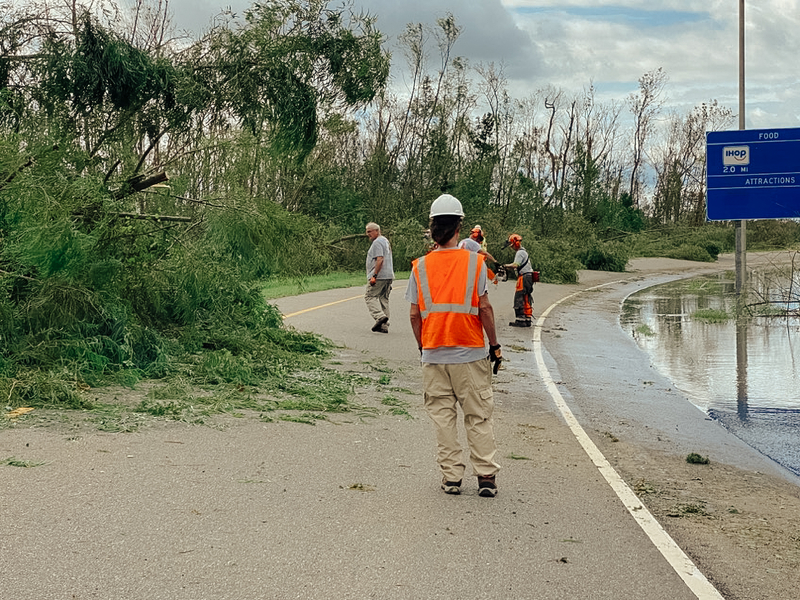Pushing across the Louisiana lowlands, right into where Hurricane Ida made landfall on Sunday, Glenn McCullough sees a swath of destruction as far as the eye can see.
“The destruction is pretty massive down here where the eye came in,” says McCullough, a volunteer from Wisconsin serving on Team Rubicon’s route clearance team. “I’m seeing trees that are 30 to 40 inches in diameter that are snapped off. And now, powerlines down, trees in the powerlines—which means they’re not going to get power for a while—trees shoved through houses… it’s a mess.”
McCullough is just one of the first wave of volunteers—many of them veterans—already brought into the disaster zone by Team Rubicon. On Monday, the teams began providing route clearance first around LaPlace, Louisiana—on the western edge of Lake Pontchartrain around 30 miles north of New Orleans—and more recently in Houma, LA, just northwest of where Ida’s eye made landfall twice on Sunday.

Hurricane Ida’s eye made landfall around noon CDT on Sunday, August 29, near Port Fourchon, LA, bringing with it sustained winds of 150 mph, and massive flooding in its wake. Two hours later, the eye made a second landfall along the southeastern coast of Louisiana just southwest of Galliano, LA, with maximum sustained winds estimated at 145 mph.
For McCullough and Team Rubicon’s route clearance volunteers, the goal at this moment is to clear enough road for emergency crews to reach those still trapped in homes, to make it possible for people to get in and out of their homes, and to carve a path for service workers to gain access to outage areas, once attempts to restore electricity begin.
Two days on, more than 1 million homes and businesses in Louisiana, and more than 50,000 in Mississippi remained without power. Also in Louisiana, more than 314,000 people were without drinking water and another more than 329,000 were under boil restrictions.

By the end of Monday, Team Rubicon volunteers had already cleared nearly 10 miles of debris in the St. James, Jefferson, and Lafourche Parishes around New Orleans. Within the next couple of weeks—once it’s safe and feasible—Team Rubicon expects to deploy hundreds more volunteers to the site of the disaster to help residents clear hurricane debris, muck flooded houses, and return to their safely to their homes.
Recovery for the people of Louisiana could take time. The region was hit hard by Hurricanes Laura, Delta, Zeta, and to some extent Sally, in 2020. Now, flooding and wires tangled in downed trees mean it may be days—if not weeks—before electricity is restored to the region and the work of drying out water-drenched homes can begin. Until then, locals will be forced to wade out and wait out, hoping their homes dry before mold sets in and that another hurricane or storm doesn’t descend before roofs can be tarped and holes fixed.



